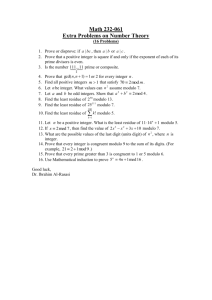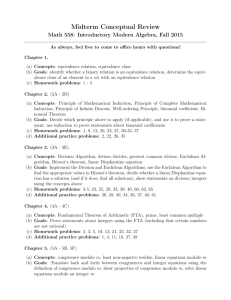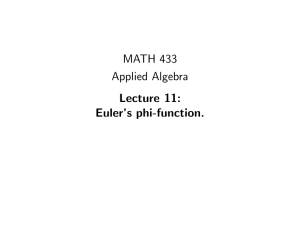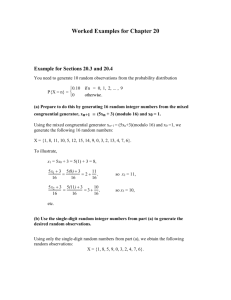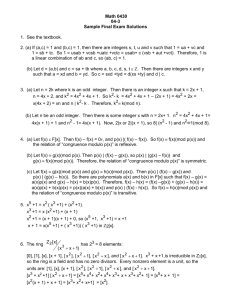1 - Illinois State University
advertisement
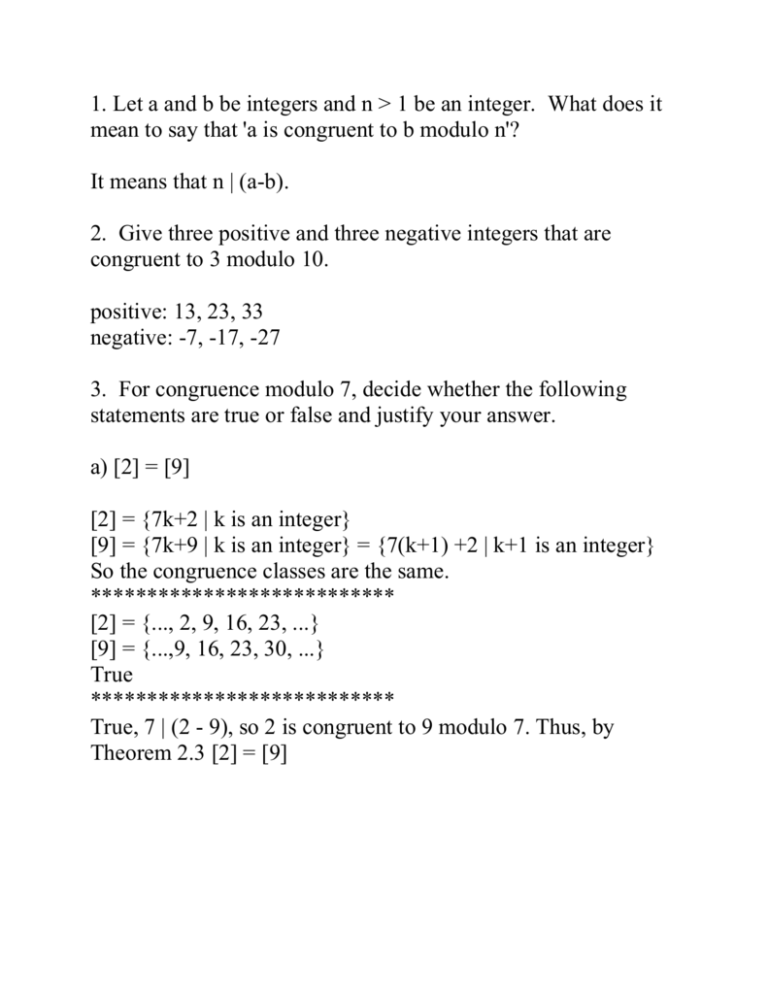
1. Let a and b be integers and n > 1 be an integer. What does it
mean to say that 'a is congruent to b modulo n'?
It means that n | (a-b).
2. Give three positive and three negative integers that are
congruent to 3 modulo 10.
positive: 13, 23, 33
negative: -7, -17, -27
3. For congruence modulo 7, decide whether the following
statements are true or false and justify your answer.
a) [2] = [9]
[2] = {7k+2 | k is an integer}
[9] = {7k+9 | k is an integer} = {7(k+1) +2 | k+1 is an integer}
So the congruence classes are the same.
***************************
[2] = {..., 2, 9, 16, 23, ...}
[9] = {...,9, 16, 23, 30, ...}
True
***************************
True, 7 | (2 - 9), so 2 is congruent to 9 modulo 7. Thus, by
Theorem 2.3 [2] = [9]
b) [3] = [12]
[3] = {7k + 3 | k is an integer}
[12] = {7k + 12 | k is an integer} = {7(k+1) + 5 | k+1 is an
integer}
So the congruence classes are not the same
********************************
[3] = {..., 3, 10, 17, 24, ...}
[12] = {..., 12, 19, 26, ...}
False
********************************
False, 7 /| (3 - 12 = -9), so 3 is not congruent to 12 modulo 7.
Thus, by Theorem 2.3 [3] /= [12]
c) [4] = [-3]
[4] = {7k + 4 | k is an integer}
[-3] = {7k - 3 | k is an integer} = {7(k-1) + 4 | k-1 is an integer}
So the congruence classes are the same.
***********************************
[4] = {..., 4, 11, 18, 25, ...}
[-3] = {..., -3, 4, 11, 18, ...}
True
***********************************
True, 7 | (4 - (-3)), so 4 is congruent to -3 modulo 7. Thus, by
Theorem 2.3 [4] = [-3]
4. How many distinct congruence classes are there modulo 7?
modulo n where n > 1 is an integer?
By Corollary 2.5, there are 7 distinct congruence classes modulo
7 {[0], [1], ...,[6]}. In the same way, there are n distinct
congruence classes modulo n {[0], [1], ..., [n - 1]}.
